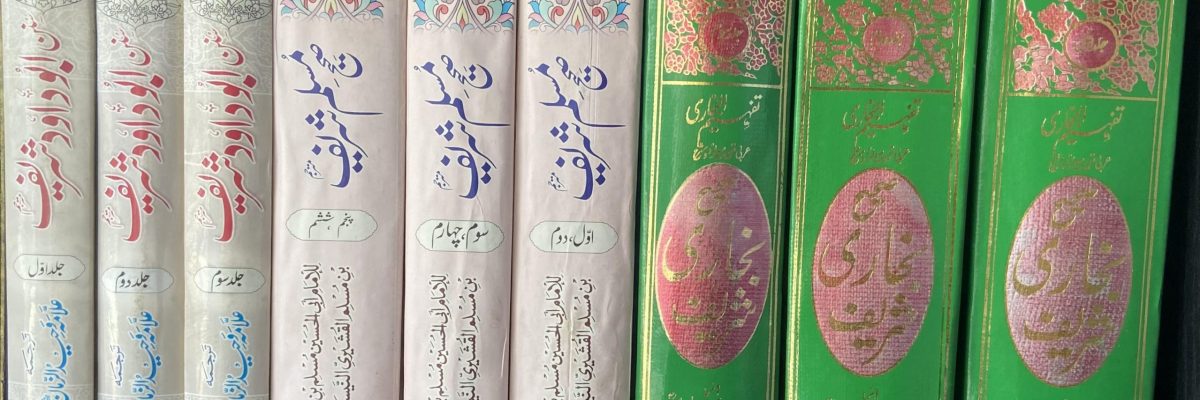Fatwa ID: 07040
Answered by: Maulana Burhaan Rahman
Question:
Are you allowed to make 3D human characters for video games in Islam?
In the name of Allah, the Most Gracious, the Most Merciful
Answer:
Pictures of living things (humans/animals); drawing them, keeping them hung on the wall etc. is spoken about in various Hadeeth(s):
Our beloved prophet (SAW) mentions:
كُلُّ مُصَوِّرٍ فِي النَّارِ يَجْعَلُ لَهُ بِكُلِّ صُورَةٍ صَوَّرَهَا نَفْسًا فَتُعَذِّبُهُ فِي جَهَنَّمَ ” . وَقَالَ إِنْ كُنْتَ لاَ بُدَّ فَاعِلاً فَاصْنَعِ الشَّجَرَ وَمَا لاَ نَفْسَ لَهُ . فَأَقَرَّ بِهِ نَصْرُ بْنُ عَلِيٍّ .
All the painters who make pictures would be in the fire of Hell. The soul will be breathed in every picture prepared by him and it shall punish him in the hell, and he (Ibn ‘Abbas) said: If you have to do it at all, then paint the pictures of trees and lifeless things; and Nasr b. ‘Ali confirmed it. [Muslim Hadeeth no: 2110]
In another Hadeeth he says:
إِنَّ أَشَدَّ النَّاسِ عَذَابًا عِنْدَ اللَّهِ يَوْمَ الْقِيَامَةِ الْمُصَوِّرُونَ
The creators of images will be the ones who suffer Allah’s harshest retribution. [Bukhari 5950]
He (SAW) also says:
لاَ تَدْخُلُ الْمَلاَئِكَةُ بَيْتًا فِيهِ كَلْبٌ وَلاَ صُورَةٌ
Angles do not enter a house that has either a dog or a picture in it. [Bukhari Hadeeth no: 3332]
The word “Soorah” mentioned in the hadeeth is no doubt referring to pictures containing animate beings/living things.
We learn from the Ahaadith above, that drawing living things and keeping drawings of them up (e.g. on the wall) is prohibited.
However, 3D imaging is produced as technology develops. So, we must now determine whether digital animate pictures (3D imaging falls into this narrative), follow the same ruling of the pictures that are mentioned in the Hadeeth.
A normal drawing 2D picture is simple i.e. you can pick up a piece of paper and draw a living thing on it. From the Hadeeth above we understand that it is Haram
Ibn Hajar makes mention of what it means by pictures in Hadeeth no: 3332 of Bukhari.
وأما الصور فلأن تصوير ذوات الأرواح
As for the pictures, it refers to “drawing” pictures that have a soul in it (i.e. living things).
So we understand drawing/making animate things is what is referred to here. In Lisaan Al Arab it mentions about the word تصوير:
نقش صورة الأشياء أو الأشخاص على لوح أو حائط أو نحوهما بالقلم أو بالفرشة أو بآلة التصوير
Designing picture of people/things upon a slate or smooth surface (paper etc.) or anything a like with a pen or brush or any picture making tool. [Lisan Al Arab Dar bayroot Vol 7 page 158]
A 3D character is not made in such a way and cannot be made in such a way.
According to game-ace (a very famous developmont service): “3D character modeling is a multi-stage process in which a 3D artist applies different software and tools to create a character for a game or other form of media. There are two main ways to 3D model a person or other character type: spline and polygon modeling.”
Furthermore it mentions: “3D animation comprises the manipulation of characters and objects with software of three dimensions: height, width, and depth”
According to Topology guides: “3D characters rely on mathematical models which needs; vertex, edge, polygon, Ngon etc.”
So as you can see, designing 3D characters with software’s etc. does not fall under the banner of tasweer. So from this we can understand that 3D characters are allowed to be made.
You can still say that this contemporary issue has a “grey area” in the sense that there are “similarities with tasweer” and so it is best to stay away from it unless you really need to do so.
Our beloved prophet (SAW) mentions:
دَعْ مَا يَرِيبُكَ إِلَى مَا لاَ يَرِيبُكَ
Leave that which makes you doubt for that which does not make you doubt. [Nasa’I Hadeeth no: 5711]
Only Allah knows best.
Written by Maulana Burhaan Rahman
Checked and approved by Mufti Mohammed Tosir Miah
Darul Ifta Birmingham

